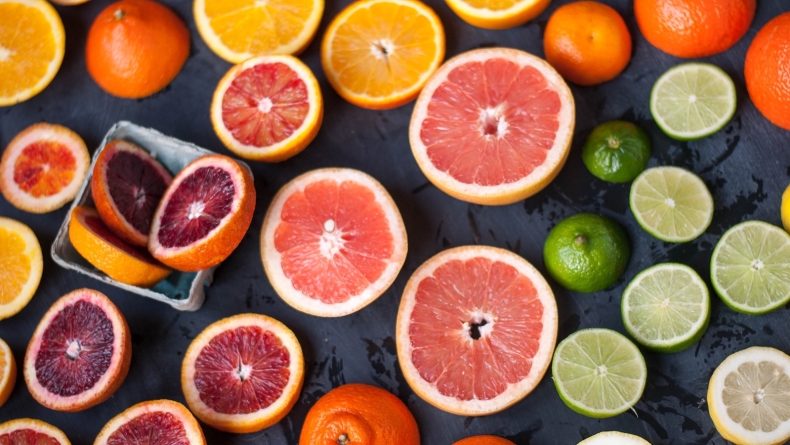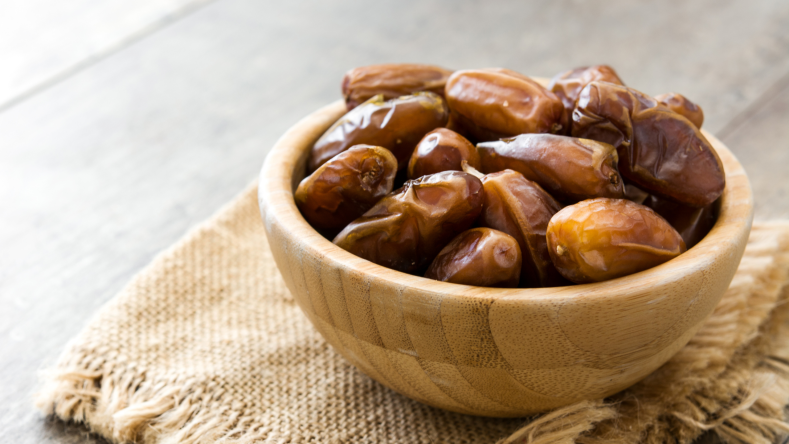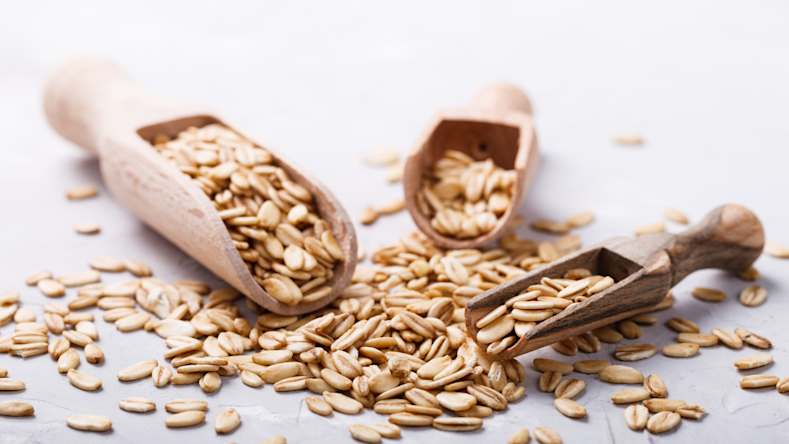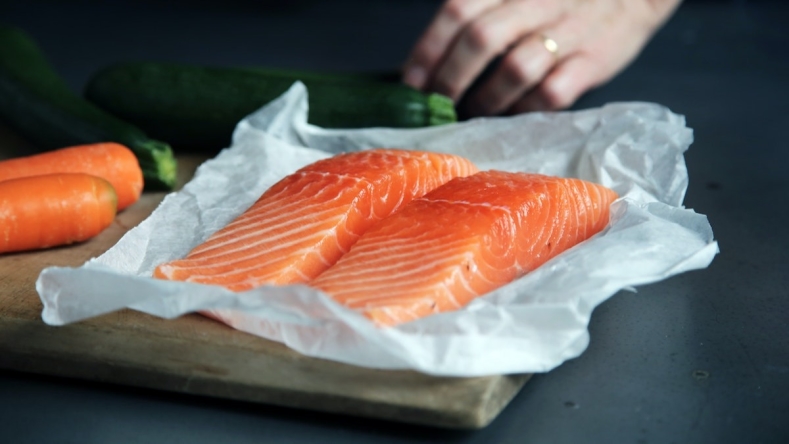The best foods for energy, according to Registered Dietitians
Want to feel more energized throughout the day? Here are 12 energy-boosting foods that Registered Dietitians recommend.

If you’ve ever skimped on sleep or been stressed out at work, you may find that your energy levels tank as well. This is because sleep and stress management are foundational to feeling and performing your best. However, what you eat is also intimately connected with energy levels, since food immediately impacts how we feel.
While carbs or coffee might be two of your go-to's for a quick energy boost, they aren’t the best for sustaining your levels throughout the day. In fact, overdoing either can actually increase fatigue and interfere with sleep.
So what are the best foods for energy? We asked eight Registered Dietitians for their top energy-boosting food recommendations to help you stay alert, focused, and productive throughout the day. Here’s what they had to say.
Hemp seeds
Mild in flavor and easy to sprinkle on just about anything, hemp seeds offer an incredible source of nutrients, including protein, fiber, omega-3s, and numerous minerals (like magnesium, zinc, iron
Dietitian and Elo Health Coach, Kelly Magill Magnesium
Since two tablespoons of hemp seeds provide 75% of your daily recommended value of magnesium, Magill suggests blending them into a smoothie, sprinkling them on top of your oatmeal, or mixing them into a salad.

Citrus fruits
Vitamin C is most known for its immune support, but it has many other health benefits
“Research suggests vitamin C slows mitochondrial aging, which means that young cells equal more energy [ 1 Jessica Doggert
“Studies also show that even just the scent of citrus is energizing, so use citrus essential oils to dab on your wrist or sniff when your energy is low [ 2
Vitamin C is found in citrus fruits like oranges, lemons, limes, clementines, and grapefruit. To increase your energy with citrus, Dogger recommends slicing up some oranges, squeezing fresh lemons & limes in your water, or trying a broiled grapefruit for dessert. Yum!
Beets
Most known for their sweet, earthy flavor (or perhaps their ability to stain your hands bright pink), beets are loaded with energy-boosting nutrients. In addition to being rich in folate (vitamin B9), which helps cells grow and function, beets are high in nitrates, a compound that can improve the efficiency of mitochondria, the energy-producing “power plants” in cells.
“Beets act as serious energy for your body,” Doggert tells us. “Your system converts the nitrates in beets into nitric oxide, which helps increase the amount of oxygen and blood delivered to muscles. Studies have shown that this, in turn, can help increase power, strength, and stamina during workouts and speed recovery after workouts [ 3
Well worth the mess, beets are a delicious and versatile veggie to incorporate into your diet. Toss cooked beets into a smoothie, add them to salads, bake them into fries, or even blend them into hummus.
You can also consume beets in juice or powdered supplement form. Made from dried, ground beets, beet powder packs the same nutrient and energy-enhancing nitrates but with fewer calories and carbohydrates than whole beets and beet juice. For the most benefit, Doggert recommends adding beetroot powder to your water bottle for energy-enhancing, pre-workout hydration.
Brazil nuts
True to their name, Brazil nuts are tree nuts native to the Amazon rainforest in Brazil, as well as Bolivia and Peru. These nuts are energy dense, highly nutritious, and one of the most concentrated dietary sources of the mineral selenium.
They’re a favorite energy food for dietitian and Elo Health Coach, Caila Yates
Brazil nuts’ smooth, buttery texture and nutty flavor make them perfect for enjoying raw, roasted, or blanched. Blend them into homemade nut butter, blitz them into energy balls, process them into pesto, or bake them into homemade granola. For a quick energy boost, just sprinkle them with sea salt and enjoy them as-is.

Dates
If you’re craving something sweet, Veronica Rouse of The Heart Dietitian
As Rouse tells us, “the natural sugar in dates is balanced with their fiber content. They are also full of minerals like iron, manganese, potassium, and copper, key nutrients for energy production.”
Dates are super versatile, and their seriously long shelf-life makes them convenient to keep on hand. Rouse likes using dates to add sweetness to smoothies or oatmeal and making her own energy balls. Short on time? “Cut them in half and smear on some almond butter for a sweet but balanced snack,” adds Rouse.
Blueberries
If you want something energizing but a little less sweet, blueberries should be at the top of your list. In addition to being delicious, blueberries contain less natural sugar than many other fruits and are packed with antioxidants that have anti-inflammatory and energy-boosting benefits.
As dietitian Melissa Mitri of Melissa Mitri Nutrition 4 5
To get more blueberry goodness in your diet, Mitri recommends mixing them into Greek yogurt, blending them into a smoothie for an antioxidant-rich treat, or adding blueberries to your morning bowl of oats.

Oats
Oats are another energy-enhancing superfood that should be in your regular rotation.
Bri Bell, RD of Frugal Minimalist Kitchen
“Complex carbohydrates like those found in oats provide a sustained source of energy over time compared to simple carbohydrate foods, which may give you a quick energy boost but leave you feeling sluggish,” says Bell.
Bell thinks oats make a tasty, energy-packed breakfast and says they’re also great to cook with. To get more into your diet, she recommends adding oats or oat flour into muffins, bread, granola, or energy balls.
Whole grain breakfast cereal
While we’re on the topic of breakfast, whole-grain breakfast cereal shouldn’t be overlooked. It’s quick and convenient, packed with nutrients, and can be a great source of lasting energy, especially when paired with protein (like soy or dairy milk) and a sprinkle of nuts or seeds for healthy fats.
“Most whole grain breakfast cereals (think bran flakes, Cheerios, or even Special K) are fortified with B vitamins —specifically B12, Riboflavin, and Thiamine. These B vitamins help convert carbohydrates into glucose, which gives us energy,” says Yates.
“Additionally, the fiber found in whole grain cereals helps slow the absorption of carbohydrates, avoiding a steep blood sugar spike. This decreases the likelihood of a sugar crash and provides us with long-lasting, consistent energy,” she adds.
When buying whole-grain breakfast cereal, look for options made from 100% whole grain that contain at least 4 grams of fiber and fewer than 6 grams of added sugar per serving.
Nutritional yeast
Nutritional yeast, also known as “nooch,” is loaded with umami goodness and is commonly used in vegan cooking. True to its name, nutritional yeast is also loaded with nutrients, making it an energy-boosting essential for Elo Dietitian and health coach, Alayna Hutchinson
According to Hutchinson, “This nutty-tasting vegan yeast contains high levels of B vitamins, including B-12, folate, riboflavin, thiamine, and B6, which are all essential for metabolic reactions in the body. In addition, nutritional yeast contains all nine essential amino acids, making it a complete protein akin to animal proteins.”
Not sure how to use it? Try nutritional yeast in place of Parmesan cheese on pasta, or sprinkle it on top of popcorn or your favorite salad for added flavor and a healthy energy boost.
Beef liver
Despite having fallen out of favor in recent decades, beef liver is one of the most nutritionally dense foods on the planet. In fact, it’s one of the factors that led to the discovery of vitamin B12 and was used to treat nutrient deficiencies [ 6
“Beef liver is at the top of the list for superfoods,” Magill tells us. “It's a powerhouse of vitamins and minerals, specifically vitamin B12, iron, copper, magnesium, and other B vitamins. These nutrients help your body turn the food you eat into usable energy and help to prevent anemia, provide sufficient oxygen, and support physical stamina.”
There’s no doubt about it; beef liver has a distinct taste that you might love or detest. If pan-fried liver and onions don’t appeal to you, Magill recommends mixing it in with your favorite ground beef recipes (like burgers or bolognese) or taking it in capsule form.

Shrimp
They may be low in calories, but shrimp has several other energy-enhancing qualities that make it a nutrition powerhouse.
“Not only is shrimp high in protein (a whopping 24 grams per serving),” says Hutchinson, “but a single serving contains 21% of the day’s energy-producing B12. They are also chock-full of the spark-plug minerals: phosphorus, copper, zinc, magnesium, calcium, potassium, iron, and manganese.”
Shrimp is incredibly versatile, can be purchased frozen or fresh, and cooks up in just a few minutes, making it a perfect protein to add to your regular rotation. Add shrimp to pasta, stir-fry, salads, lettuce wraps, tacos, soups, or noodle bowls for a satisfying meal, or snack on some shrimp cocktail for a quick pick-me-up.

Sardines and salmon
Sardines and salmon are most known for their satiating protein and brain-boosting omega-3 fats, which provide the body with sustained energy and stable blood sugar, and may even improve fatigue.
Research has found associations between fatigue and low omega-3 levels in patients with depression, sleep problems, and chronic fatigue syndrome [ 7
Want some yummy ways to enjoy sardines and salmon? Rouse suggests pairing smoked salmon or canned sardines with ricotta cheese and crackers for a healthy snack or adding them to salads for a satiating meal.
Tips for optimizing your energy levels
While these foods are packed full of energy-boosting properties, they aren’t a magic bullet for instant energy. Elo coach and dietitian, Silvia Segestrale, reminds us that whether these energy-boosting foods will work depends on the big picture.
“Even if you include all of the energy boosting foods in your daily diet but you don't sleep or control your blood sugar levels throughout the day, or experience a high amount of stress, a person eating these foods may not experience any benefit,” she says.
With that, here are five tips to optimize your energy levels and reap the most benefit from these energy-boosting superfoods.
Keep your blood sugar on an even keel. Avoiding large spikes and drops in blood sugar is essential for keeping energy levels stable throughout the day. To do this, focus on eating low-glycemic index carbohydrates paired with lean protein and healthy fats and limiting your intake of sugar-sweetened foods and beverages.
Get adequate sleep (almost) every night. Getting enough shuteye allows your body to move through all of the stages of sleep, which experts believe is essential for maximizing energy levels. The last stage of non-REM sleep appears to be the one that plays the greatest role in energy, enhancing your ability to make ATP [
8
]. Here are some thingsyou can do
to get more quality shut-eye each night.Move your body daily. Regular physical activity can improve muscle strength, boost endurance, and sleep quality [
9
]. Aim for 30 minutes of moderate-intensity movement most days to reap the energizing benefits.Learn how to manage stress. Stress affects everyone, but too much can mess with your sleep and leave you feeling fatigued. Activities like running, yoga, meditation, therapy, or even a favorite hobby can help you keep stress levels under control. Science also shows that
certain supplements can help manage stress
.Moderate alcohol and caffeine intake. Alcohol and caffeine can alter your energy levels significantly, as even moderate drinking can increase your blood sugar, decrease REM sleep and lower your body’s natural stimulants like dopamine and serotonin. Moderate caffeine intake can increase mental alertness and physical energy, but too much can lead to restlessness and sleep disturbances. Limit your consumption of both beverages to 1-2 per day.
Summary
Eating the right foods is essential for keeping your energy levels up throughout the day. While all foods provide energy in some form, certain foods have nutritional advantages that make them energy powerhouses. According to Registered Dietitians, some of the best foods for energy include hemp seeds, citrus fruits, beets, brazil nuts, dates, blueberries, oats, whole grain breakfast cereal, nutritional yeast, beef liver, shrimp, sardines, and salmon.
However, filling up on these foods isn’t a magic bullet for instant energy. Factors like sleep, blood sugar, overall diet quality, and stress hugely impact energy levels, so it’s essential to ensure you prioritize these foundations first, or you likely won’t reap any of these foods’ energy-boosting benefits.
Disclaimer: The text, images, videos, and other media on this page are provided for informational purposes only and are not intended to treat, diagnose or replace personalized medical care.
Key takeaways
Carbs and coffee are common foods associated with increased energy levels, but these aren’t the best for sustaining your energy all day since overdoing either can increase fatigue and interfere with sleep.
Eating a balanced, nutrient-rich diet, getting enough sleep, managing stress, and keeping blood sugar levels stable all play a role in boosting energy.
According to Registered Dietitians, the best energy foods include hemp seeds, citrus fruits, beets, brazil nuts, dates, blueberries, oats, whole grain breakfast cereal, nutritional yeast, beef liver, shrimp, sardines, and salmon.
References
Kucharská, J. (2008). Vitamins in Mitochondrial Function. In: Gvozdjáková, A. (eds) Mitochondrial Medicine. Springer, Dordrecht.
https://doi.org/10.1007/978-1-4020-6714-3_21
Warrenburg, S. (2005). Effects of Fragrance on Emotions: Moods and Physiology. Chemical Senses, 30(Supplement 1), i248–i249.
https://doi.org/10.1093/chemse/bjh208
Domínguez, R., Cuenca, E., Maté-Muñoz, J. L., García-Fernández, P., Serra-Paya, N., Estevan, M. C., Herreros, P. V., & Garnacho-Castaño, M. V. (2017). Effects of Beetroot Juice Supplementation on Cardiorespiratory Endurance in Athletes. A Systematic Review. Nutrients, 9(1), 43.
https://doi.org/10.3390/nu9010043
Hein, S., Whyte, A. R., Wood, E., Rodriguez-Mateos, A., & Williams, C. M. (2019). Systematic Review of the Effects of Blueberry on Cognitive Performance as We Age. The journals of gerontology. Series A, Biological sciences and medical sciences, 74(7), 984–995.
https://doi.org/10.1093/gerona/glz082
Kalt, W., Cassidy, A., Howard, L. R., Krikorian, R., Stull, A. J., Tremblay, F., & Zamora-Ros, R. (2019). Recent Research on the Health Benefits of Blueberries and Their Anthocyanins. Advances in Nutrition.
https://doi.org/10.1093/advances/nmz065
Scott, J. M., & Molloy, A. M. (2012). The discovery of vitamin B(12). Annals of nutrition & metabolism, 61(3), 239–245.
https://doi.org/10.1159/000343114
Castro-Marrero, J., Zaragozá, M. C., Domingo, J. C., Martinez-Martinez, A., Alegre, J., & von Schacky, C. (2018). Low omega-3 index and polyunsaturated fatty acid status in patients with chronic fatigue syndrome/myalgic encephalomyelitis. Prostaglandins, leukotrienes, and essential fatty acids, 139, 20–24.
https://doi.org/10.1016/j.plefa.2018.11.006
Harvard Health. (2020, July 21). How sleep boosts your energy.
https://www.health.harvard.edu/healthbeat/how-sleep-boosts-your-energy
Exercise: 7 benefits of regular physical activity. (2021, October 8). Mayo Clinic.
https://www.mayoclinic.org/healthy-lifestyle/fitness/in-depth/exercise/art-20048389?reDate=08112022







